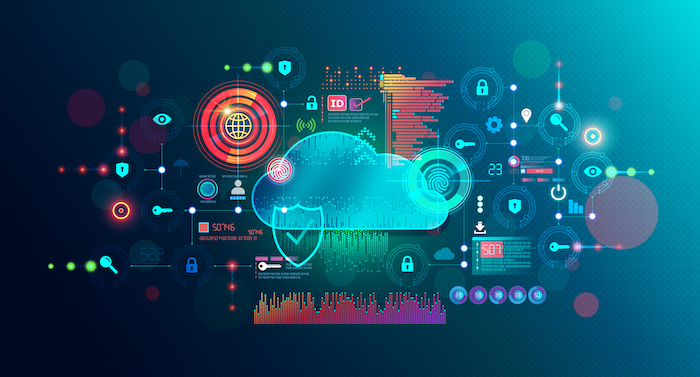Cybersecurity remains one of the top priorities for IT professionals working across the industry spectrum. Whether you are a CIO at a Fortune 500 company or in charge of cybersecurity for a small retail business, you constantly face threats from cyber criminals that have evolved their practices for gaining access to sensitive customer and proprietary information. One of the most effective ways to enhance the cybersecurity standards for your organization is by using the tools provided by Identity and Access Management (IAM). IAM has emerged as a critical strategy to help organizations secure sensitive data, while at the same time not hampering business operations.
What is Identity and Access Management (IAM)?
IAM tools manage digital identities, as well as monitor access to data, systems, and resources across an entire organization’s IT infrastructure. As a digital security management solution, IAM dramatically reduces the risk of identity-related cybercrimes, such as the theft of customer banking information. Advancements in technology allow organizations to implement the best IAM practices on-premises, as well as take IAM tools to the cloud where many organizations share computing resources.
The key is to find the right IAM partner that offers the types of digital tools that meet your organization’s security needs.
Why is IAM Critical For Cybersecurity?
If you had to define IAM in one sentence, the best way to do it is to state that IAM tools prevent unauthorized users from gaining access to your organization’s computer network. Without an IAM solution for your organization, you increase the risk of falling victim to cybercrimes. IAM tools are critical for cybersecurity because they grant a limited number of people for a limited amount of time access to your computer network. Examples of groups of people that can access your company’s computer network include vendors, contractors, customers, and employees.
IAM represents the most effective solution to lower the risk of fraudulent digital activities by automating your entire organization’s cybersecurity measures. Automation allows your organization to reallocate labor resources to other IT matters, thus not only strengthening cybersecurity, but also improving employee efficiency and productivity.
How Does IAM Strengthen Cybersecurity?
As an automated cybersecurity solution, IAM removes human error from the equation. Automation decreases the likelihood of internal security breaches because approved users have access to a limited number of platforms.
IAM Reduces Password Breaches
IAM represents the best digital solution for reducing or even eliminating password breaches. Despite the ever-changing tools used by cybercriminals to steal passwords, IAM technology easily detects breaches to prevent digital access across all company platforms. Features such as biometrics and frequent password updates keep passwords out of the grasp of cyber criminals.
IAM Protects Highly Sensitive Data
An IAM cybersecurity solution helps your organization adopt the most effective cybersecurity policies over all devices, systems, platforms, and applications. Adopting the best cybersecurity policies identifies cybersecurity breaches, as well as revokes access to users that violate company policies. IAM ensures everyone who accesses your organization’s computer network cannot enhance their privileges by gaining access to unauthorized data and information.
IAM Uses Multi-Factor Authentication
When organizations started to follow a two-factor authentication model, they experienced a reduction in the number of cybersecurity breaches. However, cybercriminals have caught up to the two-layer user verification model, which means organizations must adapt by increasing the number of steps required for user confirmation. IAM addresses this issue by requiring more than two factors for users to gain access to sensitive company data and information.
Multi-factor authentication (MFA) represents the new and improved approach to screening users.
IAM Centralizes Access Control
Centralizing all cybersecurity functions through an IAM solution improves your organization’s cybersecurity by creating transparent security standards, policies, and configurations. A centralized approach to cybersecurity makes it much easier to identify threats and then withdraw access privileges. Centralization ensures every member of your cybersecurity is held accountable for upholding the high standards established by an IAM.
How Does IAM Benefit Your Organization?
IAM adds several layers of security for your existing computer network, while not compromising network performance. Your organization also benefits because an IAM solution ensures your company remains compliant with the standards established by GDPR and HIPAA. Your cybersecurity team can easily reconfigure the installed IAM to account for changing government standards and regulations.
Implementing IAM protocols also reduces the number of issues faced by your organization’s cybersecurity team. Since a growing number of IAM solutions unfold on the cloud, cybersecurity professionals can easily implement security measures by using standard browsers and devices. Without needing to maintain an on-premise cybersecurity platform, your organization benefits by minimizing IT-related costs. Although users must clear more security factors to gain access to computer networks, the process takes much less time than it takes passing through other types of cybersecurity protocols.
The Bottom Line on Identity and Access Management
Adopting an IAM solution for cybersecurity issues addresses every potential threat to your organization’s computer network. Since cybercriminals are more sophisticated than ever, discover a few more IAM tips that can help your organization enhance its cybersecurity strategy.
Additional Cybersecurity Resources
Implementing a Zero-Trust Framework for Identity Management
Preparing Your Organization for the Future of Cybersecurity



0 Comments